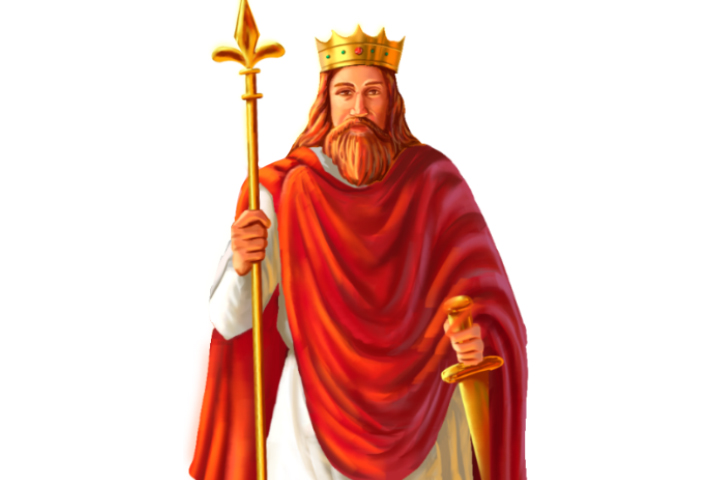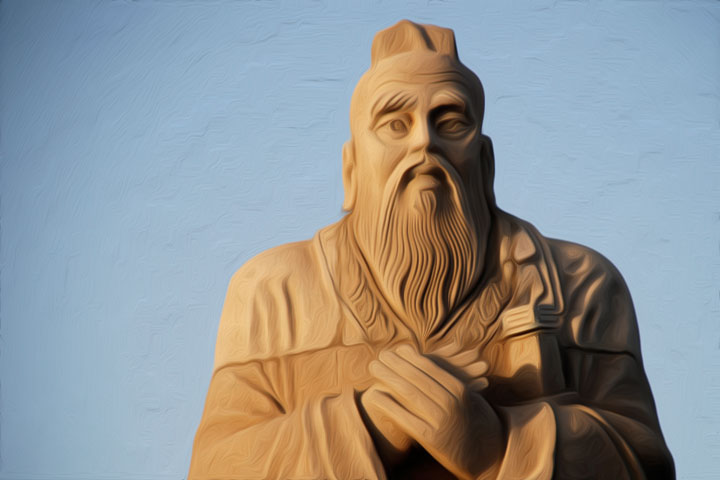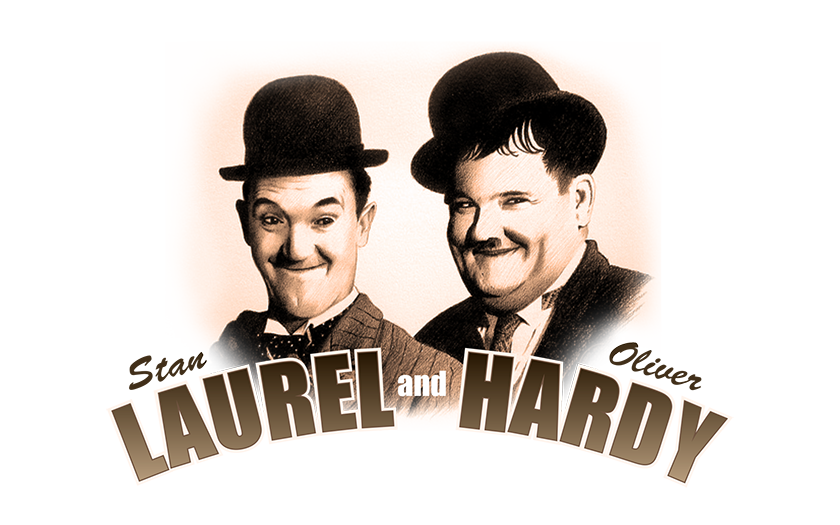

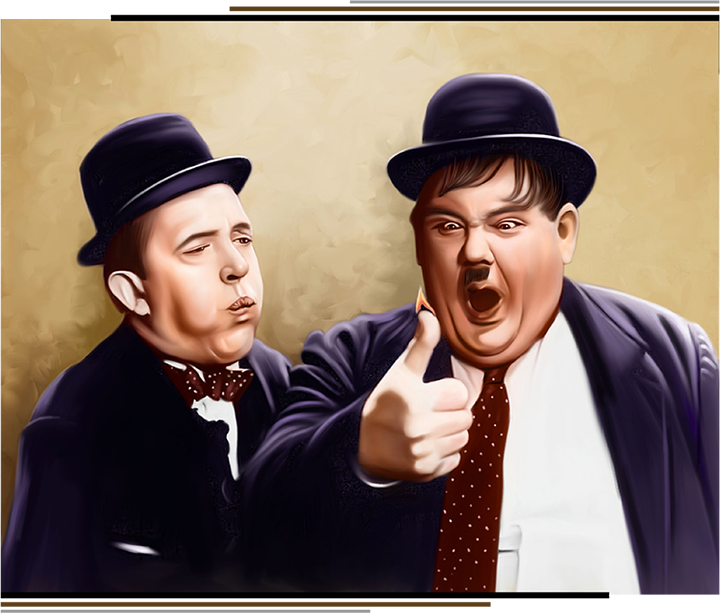
Remember the time when we were small and our parents took us to the circus - the trapeze artists, the lion jumping through the ring of fire, the bike stunts…we saw them all. Then came that irrepressible personality; the joker…the clown - he made us laugh with his antics, and we had a good time. Laughter gives us that feeling, we feel close to the person who makes us laugh. Clowns make us feel that way. We would put a range of colours on him in our colouring book, for he gave us the liberty to colour him in myriad shades…he was, after all, a joker!
Life is a long journey interspersed with tears of sadness and squeals of delight, like two opposites; combining to make a whole. It is replete with comic and tragic twists and turns, and they are most often closely linked together. Life is a tragedy for those who take it too seriously and a comedy for those who see the fun in it. For a comic twist in the tale of life, a joke is all it takes to bridge the gap between two people…the one who tells or performs the joke - the comedian; and the one who hears or witnesses the performance - the spectator. So it does take two to really laugh…aha…and how do you think it would be if there were two of them…I mean two comedians who formed a comic partnership in films? Oh, that would be a double dose of laughter for us, wouldn’t it be?
So come, let me tell you about such a wonderful pairing. This duo has shown how togetherness can transform a relationship and take it to great heights. Their films have shown universal popularity. These two very funny gentlemen have catapulted their way into the halls of fame with their universal comedy and their names are known all over the world as…yes, you guessed it right…the inimitable Laurel and Hardy!
Splish, splash and sploosh,
And Hardy falls plonk;
On mud, or tar, O’ golly!
Screaming at Stan for his folly,
`Well, here’s another nice mess
you’ve gotten me into!’
And Stan with looks bewildered,
Flails his hands and says,
“Well, I couldn’t help it!”
It ain’t his fault, after all !
It never ever is!
Oh so much innocence in them,
In making no sense of nonsense,
A duo in duel so comic;
You bet it’s a jolly good tonic.
One is Laurel, the other is Hardy,
They are the two crowns…
…clowns of glory!
A truly delectable duo!
The slim and long-faced Stan as Laurel and the fat and chubby-faced Oliver as Hardy leave an instant impact upon viewers of their comedy films. The Laurel & Hardy pairing is like the eternal paradoxes in life - like day & night, shadow & light, dawn & dusk – so different … yet they had to come together, to light up the screen of life with their comic acts. Just looking at them together is enough to make one smile, for they are so much in contrast to each other.
Stan Laurel was an Englishman and Oliver Hardy was an American. Before they came together for the double-act, both of them were established actors. Laurel had starred in over 50 films and Hardy had starred in over 250 films. A chance pairing in the film ‘Lucky Dog’ at producer Hal Roach’s film studio brought them together…and later on, they formed a perfect comic team officially as Laurel and Hardy. They worked initially on two-reelers and then on feature films in the 1930s, making over 100 films together.
Laurel & Hardy lit up the early classical Hollywood era of American cinema with their comedy. They were one of the most popular and critically acclaimed comic duo during the late 1920s to the mid 1940s. Both were childlike, but Stan was clumsy and Oliver was pompous. Their slapstick comedy evoked a lot of mirth and they kept people’s hearts healthy with their enthusiastic and innocent comic acts.
The comic pair of Laurel and Hardy is widely popular throughout the world, albeit under different names. In Poland, they are known as “Flip i Flap”, in Germany as “Dick und Doof” (Fatty and Stupid), in Denmark as “Gøg og Gokke” and in Italy as “Stanlio e Ollio” and “Crick e Crock”.
Now it’s almost like writing a dual biography; shall we flip a coin to see if we shall start with Flip first or Flap. Right, if it’s Tails, we’ll flip with Laurel, if it’s Heads, we’ll flap off…oops…flag off with Hardy. It’s Tails – so it’s Stan first, just like Hardy would have anyways said, “Ask Stan.” Whatever it is, their pairing as we can all see, is a really wonderful one. As Stan has said in an interview:
“Of all the questions asked about us, the most frequent is, how did the two of you get together? I always explain that we just sort of came together - naturally.”
Sure, quite naturally, for now we can’t even imagine one without the other. They introduced each other in their films with a lot of respect. Hardy would say, “How do you do? I’m Mr. Hardy. Mr. Oliver Norvell Hardy. And this is my friend, Mr. Laurel.” What grace and dignity! Expected of true gentlemen! So here we go…

Little Laurel’s father was Arthur Jefferson. Popularly known as A.J., he was a versatile showman in the North of England in the late nineteenth century. Besides acting in theatre, he also wrote, produced, directed plays and sketches for himself and other lead actors. Originally the lessee of theatres in some regions of England and Scotland, he loved all the theatres he managed. A.J. got married to Margaret Metcalfe in 1884. Margaret was a beautiful actress-cum-singer. Her stage name was Madge. She assisted A.J. by designing his stage sets and theatres. They had five beautiful children - four of them were sons and one was a daughter. Unfortunately, one of their sons died in infancy. The other boys were Gordon, Stanley and Everett and the girl was Beatrice Olga. Stanley was the second oldest of their children. Now for more on Stanley…
On a beautiful day of 16th June,1890, a handsome son was born to Arthur and Margaret Jefferson. He was like an added attraction in their drama. The birth was at his grandparents, George and Sarah Metcalfe’s house in Ulverston, Lancashire, in the North West of England. As a baby, he was quite sickly, so he stayed with his grandparents while his parents toured the city for their plays, with their other children. Later in October 1891, he was taken to his parents’ place in Bishop Auckland and was christened as Stanley at the Church of St. Peter’s.
Stan’s father was a great showman with a unique flair for advertising his theatres and shows. He would pull off unusual stunts – a lion cage would be hauled around the streets with a real lion in it mauling a fully dressed dummy of a body, with big meat inside. When crowds would gather around the wagon, canvas signs would drop down reading, “Tonight! At the Theatre Royal!” One more stunt was to have a hansom cab (a sort of horse-drawn carriage) with the cabbie “unaware” of the seemingly dead chap, bleeding heavily with a dagger in his chest. This was advertising for a horror show.
Stan’s father was good and kind. However, like any other father, he was strict on certain counts. He wished that his children attend the best schools, so he sent Stan and his brothers and sister to the best schools wherever they stayed. Besides attending school, the children would sometimes accompany their father to the various theatres where he worked.
At the age of six, Stan’s family shifted to North Shields. This was because the beautiful town of North Shields in northeastern England was in proximity to A.J.’s theatres. Stan attended a boarding school in Bishop Auckland, and would be home on weekends…to hang around backstage at his father’s theatres. The glamour of drama enamoured him. The craze was so much that he spent his pocket money on items related to stagecraft like marionettes, magic lanterns and so forth.
Show business proved to be very exciting for Stan. His father made his theatre staff convert the attic in their home into a miniature theatre with a seating of about thirty. Stan was just 9 years old then. He became the versatile showman who created this venture called the “Stanley Jefferson Amateur Dramatic Society” along with his friends. It all went well until one day. The boys were overenthusiastically kicking each other during a play; and one of the boys accidentally knocked over an oil lamp which was kept as a footlight. The lamp fell sideways and the curtains nearby caught fire. The fire had to be quenched with a fire extinguisher and with that, the Society also got extinguished!! The drama was over!!
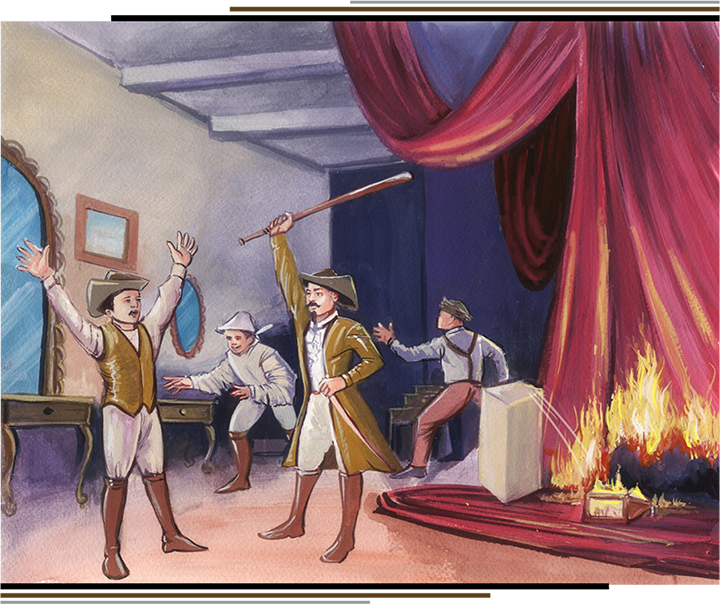
Meanwhile, in boarding school, Stan discovered a talent for the craft of comedy. With a broken voice and a lisp, he became the class clown. His studies suffered because of it. However, one of his teachers, Mr. Bates, took note of his efforts at comedy. During relaxation hours, he would often ask Stan to perform imitations and entertain him and other teachers with his jokes.
Later in 1905, Stan’s family moved en bloc to Glasgow in Scotland, for his father took over work as the manager of the Metropole, a famous theatre. Stan went to Rutherglen Academy in Rutherglen and then to Queen’s Park Senior Secondary School in Glasgow. Initially he was awed by the wonderful collar-and-coat uniform that his elder brother wore to school, but after he got his own uniform, the enchantment wore off. He began getting disinterested in school. The thought of playing truant from school gained importance. At least, that was what he did while at Queen’s Park - he would go fishing or come back home to play. Stan persistently pleaded with his parents to let him off school. His fervent pleas bore result when his father understood his dislike and let him quit school. A.J. then gave him the job of taking care of the gallery box office at Metropole Theatre. He also made him keep track of the money and the records. Stan’s brother, Gordon, was already into theatre management.
On the job, Stan was slowly mastering the intricacies of a box-office statement. During each show, he would go backstage and try on the costumes of the comedians, talk with them and repeat their jokes at dinnertime. His heart had chosen his calling in life; he desired to appear on the halls more than anything else. His mother knew of his dream, and encouraged him towards it.
Stan now had a goal in his mind. So he approached Albert E. Pickard, owner of Glasgow theatre and other enterprises and pleaded him for a trial. He desperately wanted a chance in show business. He wanted to be a part of the action on stage - strut to the beats of a band, sing a song with punch lines, crack jokes and make the audience roar with laughter. He also wanted to hear the sound of clapping hands and feel the warmth of audience applause around him.
Pickard later asked him the reason he wanted to do a trial. Stan answered simply, “I’m funny”. Pickard later came to know that the slim and solemn Stan was the son of a well-known showman. He decided to give him the much needed opportunity.
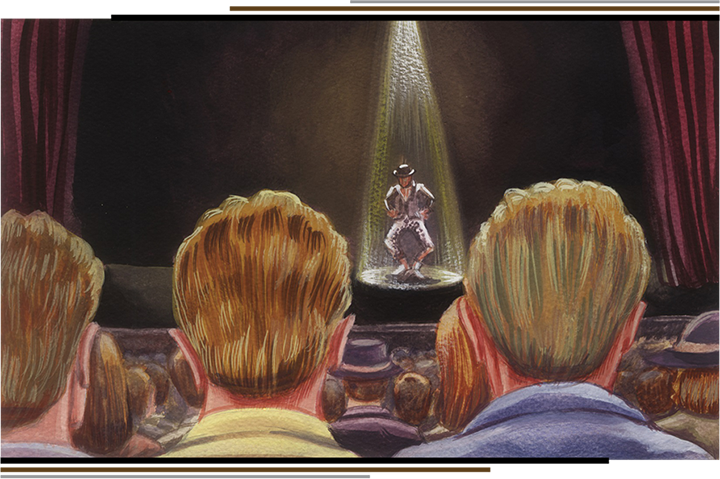
On the day of his stage debut at Pickard’s museum, Stan had taken leave from work. He had worn his father’s finest and most well-liked double-checked trousers, which he had even worn to race meetings. Now those trousers would definitely need to be altered to fit him - 16-year old Stan. Well, what’s a pair of scissors for? - a crude cut at the bottom and some shortened fashionable cuffs – and voila! Now it did resemble the typical baggy pants of the English music hall comedian!
When the call on stage came, Arthur Stanley Jefferson excitedly came onto the stage, faced the audience and began dancing deftly and singing some notable double-takes. While in the act, his eyes darted across the room and noticed – can you guess who? …standing next to Pickard was his father, Arthur Jefferson!
Horror of horrors! His father was right there in the audience, keenly watching him. Stan was in despair, but went on with his act which was a melange of themes – gags, dances and weird witticisms, derived from watching some of the cleverest “boy” comedians in the British music halls. The “boys” who Stan watched and took notes from their acts were the headliners of those days – Boy Glen, Nipper Lane and Laddie Cliff. From the jokes of these “boys” and his own, Stan had formed his own routine. He had even paid a half crown for an original song to a Glasgow musician, which he incorporated in his vigorous performance before Mr. Pickard, his father Arthur Jefferson and some patrons of the Museum Music Hall.
According to Stan, “The act was awful…But I finished strong. And what’s more, the applause was very big. I didn’t realize that this was because the audience felt sorry for me. At any rate, it was my first time before a live audience, and I felt good. I went backstage just on top of the world.”
On his way back home, as he was passing by the Metropole theatre, Stan realized he would have to face his dad, sooner or later. What had to be faced, had to be faced! He decided to be strong and face the situation sooner. So he went to meet his dad at his office. With dread in his heart and mind, Stan walked up the long flight of stairs…the stairs now seemed to be longer than the earlier times he had been there. He finally reached the outside of his father’s office after what seemed to him a very very long time. His father’s shadow behind the glass seemed bigger than before!!! He knocked and went inside. What transpired next surprised him to no end. His father looked up at him and said, “Well, congratulations. Sit down. Want a whiskey & soda?” Not expecting this sort of a response from his father, Stan gaped at him. His emotions got the better of him and he just burst into tears. He felt very relieved. His father then gently made him understand that he had no objection to the stage as his choice of livelihood if Stan was sure about it. Stan was absolutely sure! He had made his choice of career.
This was how Stan’s career began. His father then wrote him an introductory letter, and armed with it he joined the ‘Sleeping Beauty’ pantomime which was then touring England in 1907. Levy and Cardwell were the producers of this company. To Stan, the year 1907 served as a propelling year since he had now ventured into a career too.
In 1908, Stan lost one of the most important figures in his life – his mother. She died at a young age and was buried at the Cathcart cemetery in Glasgow. Stan was just 18 years old.
Stan earned a salary of a pound a week in the Sleeping Beauty pantomime company. His act was that of a Golliwog who stood very patiently by the cradle of the baby. Besides being a paid member of this professional company, Stan also served as an assistant stage manager and call boy, which added to his importance. Ahem!! After the season of the ‘Sleeping Beauty’, Stan worked as a single on some odd engagements and then understudied for ‘Home from the Honeymoon’, a sketch by his father, then running on the Moss Empire Circuit.
The next year, Stan joined a company in which he got his first comedy-character part in ‘Alone in the World’. When the curtains rose for this play, Stan in a tramp suit was fishing on the banks of a levee in the Deep South, with the Brooklyn Bridge in the backdrop. A chorus sang softly offstage. After listening impatiently for a moment or two, Stan threw away his fishing pole and uttered a classic line: “Wal, I guess`n’ calculate I cain’t ketch no fish with that tarnation mob a-singin’. Gee whizz!”
The play added to Stan’s maturity and he became aware that the theatre often promises the patron much, but reality was different. Early on in his career, he realized the difference in the advertised quality and the actual show.

After some months, Stan joined the well-known Fred Karno’s troupe of music hall artists playing at the Hippodrome Theatre in Manchester. This was his chance of a lifetime, for this proved to be a turning point in his life for the better. The history of film comedy owes a lot to Karno, who gave the opportunity to Charlie Chaplin and Stan Laurel to develop their pantomime talents and bloom.
Fred Karno’s real name was Fred Wescott. A short, well-built and energetic person, he gave the British music halls the wordless play, the pure story-pantomime. The most notable of these were Jail Birds and Mumming Birds. Stan said of Fred Karno, “There was no one like him. He had no equal. His name was box-office. He was a great boss, kindly and considerate.” At the time Stan joined the ‘Mumming Birds’ company in Manchester, it was an already famous funny variety act in the halls.
Stan usually played THE COMIC SINGER in the pantomime acts. The comic singer sang an unfunny song in a heart-rending voice and told some great unfunny jokes when asked for an encore. A typical joke went like this:
You know, the last time I sang this song a fellow said to me,
“You’ve got a wonderful voice. You ought to be with Carl Rosa.”
“But Carl Rosa’s dead,” I said.
“Yes, I know,” said the fellow, “that’s what I mean!”
Mumming Birds brought forth Stan Laurel’s ability as a comedian, especially in mime. The craft of mime is based on direct human observation and in the learning process, the apprentices of this craft must feel and know every inch of flesh and bone. For the young Stan, the Mumming Birds experience showed that a simple gesture, performed naturally without tricks, was more effectively funnier than words or songs used cleverly or funnily. Charlie Chaplin and Stan Laurel were the ideal comedians for the silent films due to their basic dependence on mime.
Stan did play most of the parts in Mumming Birds at one time or the other, and it was thus the best acting academy for him. After successful tours in Britain, the Mumming Birds company went to the U.S. in September 1910. Mumming Birds was rechristened ‘A Night in an English Music Hall’ in the U.S. and was termed as the greatest single ensemble act of the century. The tour was a spectacular success. Karno’s troupe played and got great acclaim in the major cities of America. In the troupe, accompanying Stan Laurel was Charlie Chaplin, who was to later leave his own great impression on the world.
Stan and Chaplin roomed together. He understudied for Chaplin, who was the full-time heir to the role of The Drunk. According to Stan, “He was a very eccentric person…very moody and shabby in appearance. Then suddenly he would astonish all by getting dressed to kill….He carried his violin whenever he could. Had the strings reversed so he could play left-handed ….He was unpredictable.”
In 1910, living expenses in New York were considerably more expensive than they were in England. The United States of America was still a pioneer country, exploring new options for growth. The newness and warmth of the country was alien to the Karno troupe members. Moreover, the increase in living costs and the unfair conditions of their theatrical touring took a toll on them.
After touring for some time, Stan left Karno and went back to England in the summer of 1911. He was accompanied by Arthur Dandoe, a fellow Karnoite, who used to play The Magician and The Announcer in the act. They both had a good instinct for comedy and created their own original act “The Rum ‘Uns from Rome”, back in England. This was the first act in which Stan created his own comic entity. With its success, The Rum ‘Uns from Rome provided the impetus to Stan to create endless comedy on his own. But after Dandoe received a more lucrative job offer, he left the sketch.
So Stan later met Ted Leo when they worked together in another sketch. He seemed a natural replacement for the pantomime and comedy of Dandoe, in The Rum ‘Uns from Rome. Stan and Ted Leo thus became partners in the act. They had important bookings for their act in various halls. Their act staged at the Royal Victoria Hall in Lambeth went beautifully. It was also fortunate because seated in the audience was Jim Reed, an old partner of Ted Leo’s. Reed was happy with their performance. He met them both backstage and congratulated them. He invited them to join his group for a new act ‘Fun on the Tyrol’.
Stan and Ted Leo thus joined Reed’s company of eight. In its European tour, Fun on the Tyrol staged its debut at Rotterdam. It opened well but the rains played havoc with future performances. Most of the troupe were broke and hungry. The hunger pangs were so much that members were told to steal bread. Stan would lurk in the corner of the bakery doorway and wait for the delivery man to pass by. Then he would deftly filch bread from his tray and walk away. The tray would jiggle slightly and this would make the baker’s delivery man turn around…only to see a young man walking down the street, whistling away innocently.
Then the troupe’s hopes were renewed when they obtained a week’s engagement at Liége in Belgium. The first performance was progressing well, the sketch had an unusual ending featuring a stilt-walking routine with all the members. But overwrought with hunger pains, Stan, the third walker from the end in this arrangement fell against the man next to him, this man against the next, till all of them fell in a climax of disarray, much to everybody’s dismay. This was the end of Fun on the Tyrol and Stan’s hopes almost dashed along with it. Jim Reed had a patron detective-angel who paid the troupe off. With the funds received, Stan reached Brussels with Ted Leo. After borrowing some pounds from a friend, they reached London with their budding careers seemingly concluded. Tired, travel-stained and shabby, Stan went to meet his considerably well-off brother, Gordon. Gordon was the manager of Prince Theatre in London. At the theatre, he told Stan, “Stan, why do you want to be a comic? You’ll never make any money, let alone a name for yourself.”
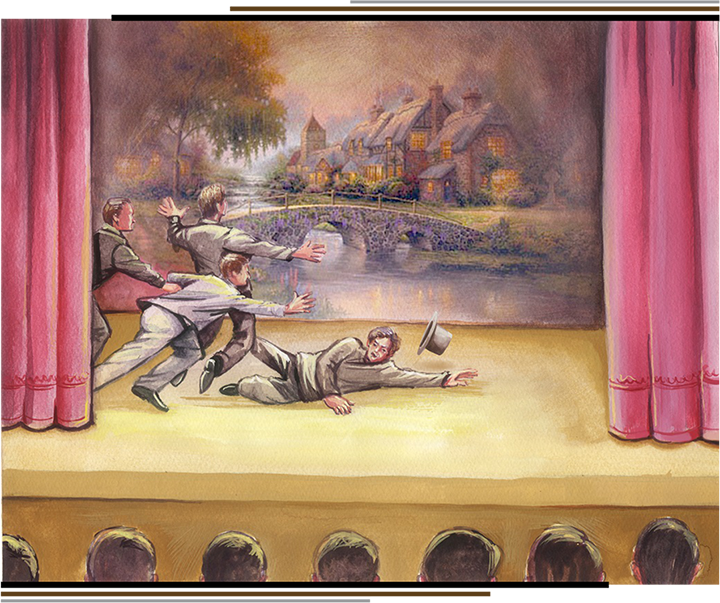
Gordon then got Stan a job in Irish actor and playwright Dion Boucicault’s ‘Ben Machree’, which was playing at the Prince Theatre. Stan took on many odd jobs including that of a part-time script typist.
Sometime before this, A Night in an English Music Hall had returned from its extended tour of the States. During an afternoon walk in Leicester Square, Stan met Alf Reeves, Karno’s manager for the American tour. Alf was also the brother of Billy Reeves, the original Drunk in the act. He offered Stan his old job as he was arranging for a new American tour, beginning on 2nd October, 1912 . Stan was to get $30 a week, a $5 raise over the old pay.
Within a week, the company sailed and began a tour on the Sullivan-Considine vaudeville circuit opening at the Empress Theatre, Cincinnati. The second tour of A Night in an English Music Hall was successful. In the same year, 1913, Charlie Chaplin left the Karno company to join forces with director Mack Sennett in Hollywood. A Night in an English Music Hall lasted only a month more as many theatres refused to take the company since it did not have Chaplin as The Drunk. Even though Stan had played The Drunk as a substitute, he was considered too young for the part. Ultimately, Karno had to close the company for good.
With the closure of Karno’s company, Stan was back on his own. He felt a creative upsurge within him. The desire to do his own act arose once again within him. He spoke to his good friends and former Karno performers, Edgar Hurley and his wife, Wren, about making their own act. They then combined to make ‘The Three Comiques’, a burglar sketch. This skit was played around Chicago “small time”, on the lowest rungs of vaudeville. When the act was played in Cleveland, Kalma, Stan got introduced to two agents, Claude and Gordon Bostock. “The Three Comiques” was changed to “Hurley, Stan and Wren” and opened in Jersey City on the Keith Circuit. The Bostocks then suggested that they change their name to “The Keystone Trio” and set the Orpheum circuit, the highest pinnacle of American vaudeville, as their target. Stan was to imitate actor-comedian Charlie Chaplin who had by then become world-famous, Hurley was to act as actor-comedian Chester Conklin, and Wren was to be actress-comedienne Mabel Normand. Since Stan knew Chaplin from their Karno days together, he imitated Chaplin wonderfully well. The Keystone Trio opened at the Columbia Theatre in New York and was a super success. Stan said, “Even if I have to say it myself, we were a bloody sensation.” The Keystone Trio had hit big time into the Orpheum circuit, and were on the road ahead with a successful run from February 1915.
But success has its pitfalls too; it not only attracts admirers but invites hostility from envious people. The success of Stan’s Chaplin annoyed and made Edgar Hurley jealous, who demanded that he be given the right to play Chaplin too. Ultimately, The Keystone Trio dissolved in October 1915, with Stan parting ways with the Hurleys.
This was another big blow to Stan. However, he took it in the right spirit and used this setback to fuel him forward, thus turning it to a blessing in disguise. Stan formed ‘The Stan Jefferson Trio’ under his own name alongwith another married couple, actor Baldwin Cooke and his wife, Alice, and began the circuit tours. The new trio called the act ‘The Crazy Cracksman’ and continually improved upon it, with Stan incorporating songs and dances, giving it a completely new look. They got $175 a week for their act which they shared between the three of them, and just enjoyed being vaudevillians.
The Stan Jefferson Trio then went to a small town in Pennsylvania in 1917. There they met The Hayden Sisters, a musical act featuring two unrelated women. Stan fell in love with one of the sisters, an Australian named Mae Charlotte Dahlberg. He soon left the trio and started a new act with his new found love. They also began to live together as common-law husband and wife.

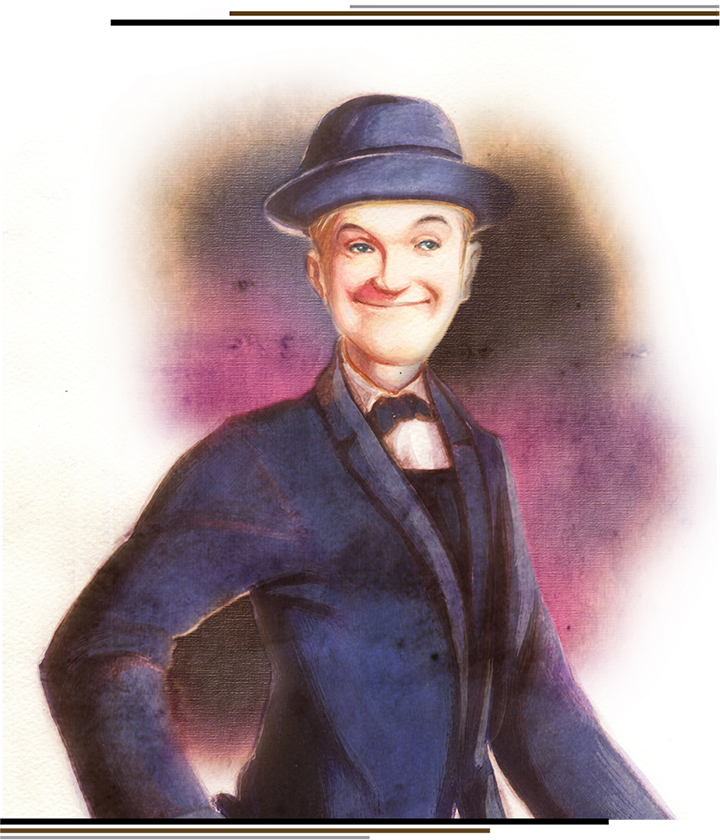
Around this time, Stan started thinking of a new name for himself. He says, “When I first started in show business, I used my full name, Stanley Jefferson. This I broke down to Stan Jefferson. Then one day, quite by accident, I happened to notice that my name had thirteen letters in it. I figured the superstition department might be the cause so I decided to make a change.”
The change happened soon. When Stan and Mae were backstage during a show, they noticed a history book inadvertently left behind by someone. When they casually flipped through the book, the image of a famous Roman general, Scipio Africanus Major with a beautiful wreath on his head, stared at them. Mae took a fancy to the wreath and then exclaimed, “Laurel. Laurel. Stan Laurel…How about that for a name?” Stan too liked the sound of it.
Thus ‘Laurel’ was added to his name, and his fortunes too changed considerably after that. ‘Stan and Mae Laurel’ was the staple fare for vaudeville fans then onwards on the principal circuit. They played around the country for two years. Stan, as the director of this act and a first-class gag-man himself, continually improvised on the act.

In early 1917, Stan was performing at the Hippodrome theatre in Los Angeles. Adolph Ramish, a very short, chubby, unpretentious but very wealthy man owned the house and watched Stan’s act from the wings. Now, Ramish thought that Stan was funnier than Chaplin and wished to make pictures with him. He told Stan that he would rent a studio and crew, and with Stan’s ideas, they could make some really funny two-reelers.
Stan was eager but hesitant as he still had eight weeks left on his present contract. But then Ramish assured him a payment of $75 a week until the films were under way. Their handshake was the start of a new contract, and the plans for the first Stan Laurel film went forward. Bobby Williamson, a former comic who was directing one-reel comedies in Florida featuring up-and-coming young men including Oliver Hardy, was chosen by Ramish to direct Stan Laurel’s first film. Stan and Williamson came up with the simple plot of a man escaping from an insane asylum. This film was a two-reeler and was shot at a small studio in Royle Heights, Los Angeles. It was titled ‘Nuts in May’. The film was previewed at the Hippodrome and was attended by Charlie Chaplin and American film maker Carl Laemmle, the founder of Universal Studios.
Nuts in May was an unusually funny film. As Charlie Chaplin watched it, he knew that Stan Laurel was destined to be a very great film comedian. At dinner that day, Charlie Chaplin told Stan about his plans for a studio of his own and the formation of another stock company of screen comedians; he wished to know if Stan would be a part of it. Stan did hope to eventually but, destiny had other plans.
Laemmle wished to know, so Ramish got a one-year deal for Stan with Universal Studios. Stan became “Hickory Hiram”, a not so terribly funny rustic, and did some three to four Hirams. The studio was undergoing reorganization and there was change in the procedures, so Laemmle cancelled all contracts. Stan was again a free agent and went back to vaudeville.
Now that was a ‘little’ about long faced and slim Arthur Stanley Jefferson…aka…Laurel, one half of the Laurel and Hardy duo. Let us know a ‘little’ about the larger half of the duo, chubby cheeks Oliver Norvell Hardy…aka…Babe Hardy.

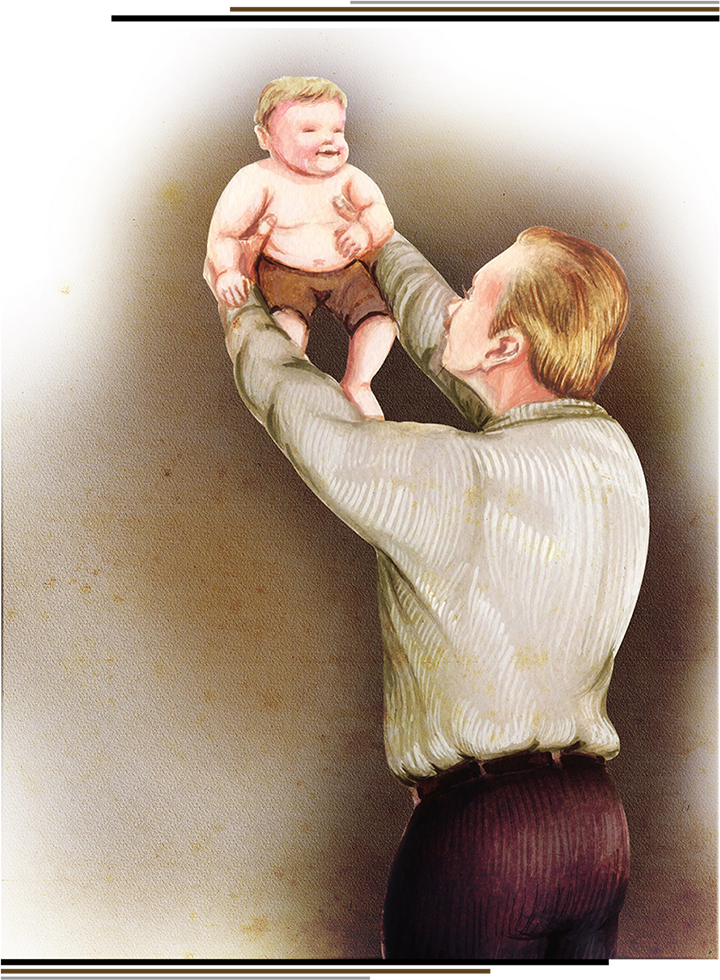
Little Hardy’s father was Oliver Hardy. He was a lawyer of English stock and his mother, Emily Norvell, was of Scottish descent. They were both widowers when they married each other. The happily married couple had five children. Their youngest child, a beautiful bundle of joy was born on January 18, 1892, in Harlem, Georgia. The baby weighed 14 pounds at birth. They named the chubby and handsome baby, Norvell Hardy.
Norvell was raised by a coloured nanny whom he called ‘Mama’. When he was small and could not understand better, he called his mother Miss Emmy. The entire family loved music and the theater, and were very fond of singing.
Unfortunately, on 22nd November, 1892, Norvell’s father died at the age of 47. Norvell was very young…just 10 months old. Being the youngest of the family, he was regarded as a baby and adored as their sweetest child. Norvell spent his early childhood in Madison, Georgia. His mother regaled him with stories about his father.
Since his father was no more, Norvell’s mother took over the responsibilities of the family. She managed the Baldwin Hotel in Milledgeville, Georgia. As a kid, he used to watch people in the lobby of his mother’s hotel. Observing people became a hobby for him and he carried this hobby right into his adulthood. This strengthened his senses of perception and understanding of people’s behaviour.
Norvell had a handsome chubby face. As a boy, he was very fond of food and used to eat a lot. He also had a melodious singing voice. Everyone in his family, especially his mother, encouraged him to sing. At his mother’s hotel, many theatrical people-performers stayed in tent shows. The stories they told fascinated him a lot; so much so that at the age of 8, he ran away from home to join Coburn’s Minstrels! He was on tour with them wherever they had their performances. As a boy soprano in the minstrel show, Norvell had two big hit songs, “Silver Threads Among the Gold” and “When You and I Were Young, Maggie.” Norvell’s mother knew where he was and corresponded with Mr. Coburn who ran the Minstrels, to keep an eye on the young lad. Mrs. Hardy thought the “glamour” of the theater would wear off and Norvell would be back home one day. Yes, he was back, but his love for theatre did not go away.
Norvell spent the next few years as a faithful son, assisting his mother in her hotel business. However, he got more involved with the theatre people since he used to hang out with them. He also ran errands for them and earned money to check out the “big” shows in Atlanta.
Like any mother would want, Norvell’s mother also wished that he should attend school regularly. However, Norvell was irregular in attending school and neglected his studies. So his mother sent him away to Georgia Military College, a government supervised military academy at Milledgeville. She thought this would be for his good.
At 14 years, Norvell weighed 250 pounds. He was taunted at school by the other boys due to his fat image. He did not like it at all, yet he was sporting enough. One day, the drill period was on at military school. Norvell was feeling very tired. So he just rested flat on the ground without budging an inch. He just couldn’t be moved! A fat stone indeed! The headmaster at the academy was a great friend of his mother and used to call him ‘the funniest boy in the world’. Perhaps these were the signs of the exemplary comedian in the making!
One year, the undergraduates played a skit, “Who killed Cock Robin?” In the climax, when the chorus came out singing, “Who killed Cock Robin?”, Norvell came on stage in costume and sang grandly in his glorious tenor voice, “I killed Cock Robin! I tolled the bell because I could pull the rope. I am the bull!” Looking at his ‘big’ image and lovely voice, everyone burst into rapturous laughter. He was well…bull indeed! He was so dear and so funny. Even in those days Norvell Hardy had a wonderful stage presence and a striking personality.
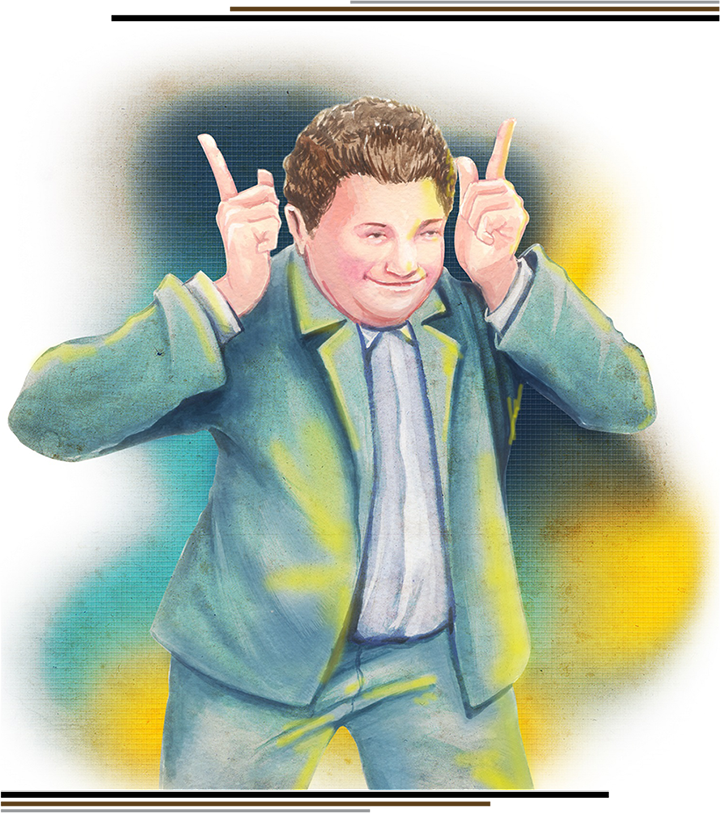
Norvell was happiest when he had to entertain people around him. He was the life of any party. Once while camping out with school friends, he climbed a tree and sang: “Lawd, if you don’t help me, don’t help that bear!” The rest of the students down below the tree howled with laughter. Show business! That’s where he just belonged! It was natural for him to be a comedian.
Later however, Norvell ran away from military school in April 1906 because he wasn’t fed enough there. His clothes caked with red mud, he took refuge in the railroad station. The kind stationmaster helped him to clean up and informed Mrs. Hardy by telephone about her son’s whereabouts. Mrs. Hardy came after him and took him home. Norvell ate twenty baking powder biscuits made by his mother, in one sitting! He was unwilling to go back to school. Maybe in his heart, he also felt bad about being teased for his ‘fatty’ image, though he did not show it outside.
His mother then tried to find out what her son really wanted to do. She spoke to him lovingly and found out that he was interested in music classes. So, she let him study voice at the Atlanta Conservatory of Music. Here he studied and practiced music under Adolph Dahm Peterson, one of the best musicians in the South. At music school, everyone thought that Norvell was quite remarkable, because he could hit high C, a musical note.
However, after a few weeks, when Norvell’s mom visited to check upon him, she found that he had played truant from his music classes. Instead, she found him in a movie house singing to illustrated slides at a salary of 50¢ a day. She told him to go back to music school and allowed him to sing on Saturdays and holidays.
Amidst all this fine music of life tragedy hit the family one fine summer. One of Norvell’s older brothers, Sam Hardy died in a swimming accident. To get over the tragic incident, he decided to help his mother move from Madison to Milledgeville, Georgia. He turned to singing again and joined a minstrel show as an end man. Norvell never gave much conscious thought to the idea of becoming a professional singer. He was at a confused stage in his life, unsure of his study or career goals. He even intended to be a lawyer and studied for some time at the University of Georgia, but gradually gave that up.
His foray into show business was from the business end. Around 1910, a local entrepreneur opened the first movie theater called ‘Electric Theatre’ in the town of Milledgeville. Norvell was enchanted by it and got himself a job there. He was a multi-tasker; he would operate the projector, sweep the theater, sing to illustrated slides and even act as manager in his boss’ absence. Running a film house enabled him to have some advantages. He got to see some of the comedies of those days. He thought that he could be as good – or maybe as bad – as some of those boys. Around this time, Norvell decided to legally change his name from Norvell Hardy to Oliver Norvell Hardy.
After working for two years in the movie theater, Oliver Hardy gave it all up and went to Jacksonville, Florida where a filmmaking industry was developing rapidly. At first, he got a job singing in vaudeville and nightclubs. He made himself the butt of comedy by billing himself as “The Ton of Jollity”. He then returned to Atlanta to sing at the Montgomery Theatre. Madelyn Saloshin, a pianist also played at the same theater. Though plain, she was very outgoing. Before long, Oliver and Madelyn made music together… they got married on 17th November, 1913, and moved back to Jacksonville.
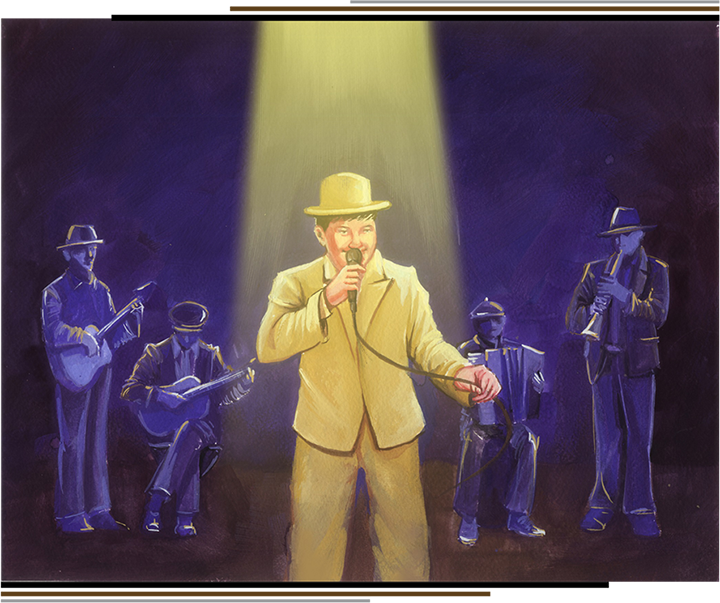
Here in Jacksonville, Oliver performed his stage work at night, and hunted for work in the studios in the daytime. He finally got a job with Lubin Motion Pictures. The company was into “split-reel” work, making a thousand-foot reel and putting two five-hundred-foot comedies on it. Oliver helped to lug films and props, helped the painters, carpenters etc. One day, the company required a fat boy for a comedy sequence. That was how Oliver landed his first movie at Lubin Motion Pictures. He was hired at $5 a day, three days a week guarantee, for the role. He would come to work everyday, watch and learn.
While working for Lubin in Florida, Oliver Hardy and his gang used to get their hair cut at an Italian barber’s shop near the studio. The Italian barber was a boy with a thick foreign accent. He liked boys and took a great fancy to Hardy – he was after all very chubby. After shaving Hardy, he’d rub powder into his face, pat his cheeks and say every time, “Nice-a-bab-ee, Nice-a-bab-ee”. The gang teased Hardy about it and started calling him “Baby” which was cut down to “Babe” later. It became his nickname and stuck with him.
Lubin later became Vim Comedies. Oliver started off with bits, comedy-bits and support. Later, he went on to stooge, comedy-characterizations, but due to his overweight physique, ended up playing the “heavy”; the villain with his trademark heavy eyebrows and moustache make-up. Sometimes, he got the chance to play straight too. He would work in turn as script clerk, assistant cameraman, assistant director and even ‘emergency’ director. But what he loved the most was to be in front of the camera. Though he was portly, Oliver played football with the studio team…he was even adjudged the team’s best player in 1914. He had handsome features despite his heaviness.
In 1915, Oliver starred in a picture called ‘The Paperhanger’s Helper’ with actor Bobby Ray, a slight and short man. Bobby was a contrast to him. He played the fall guy whereas Oliver was the wise guy in this two-reeler.

Oliver Hardy was with Vim Comedies for three years till about mid-1918. He gradually became a star comic there. He was billed as “Babe Hardy” in his early pictures. In between, for a brief period in 1917, he went to New York and did some freelance work in various film companies. He worked with actor Jimmy Aubrey in a few pictures. In New York, the competition was tougher than in Florida, and since his singing career floundered, Hardy became dissatisfied in the big city. Also, in April 1917, America entered the war (WWI). Babe was then working at a studio on the New Jersey side. The war atmosphere fired him with enthusiastic patriotism. Babe intended to enlist himself and walked in to the nearest recruiting office. The officer in charge gaped at Babe, and looking him up and down, yelled, “Hey, Sarge, come look at what wants to enlist!” The Sergeant and the officer doubled up with laughter and made some funny remarks to Babe. Their open abuse of his physical frame caused him terrible hurt and embarrassment. At that time, Hardy thought that he was really through with New York!!
So he came back to Jacksonville in Florida and did his night duty as a cabaret singer at the Burbidge Hotel. He also did some one-reeler pictures for Vim Comedies here. But he was not really satisfied with the way his career was progressing. He yearned to do more. He deliberated on his decision of going to New York again, and after some months, went back there and worked for a while as the heavy in the Billy West comedies. Actor Billy West was a Chaplin impersonator. Hardy became “heavily” popular. Though he didn’t stay long, he had now become kindly disposed towards New York. After Billy West wounded up in December 1918, Hardy headed to California; the city where film business was booming. Many of his Jacksonville friends had also gone West. Hardy started work with Vitagraph Studio. “Babe” was then dropped from his name and as ‘Oliver Hardy’, his career started zooming up. “Babe” however remained his affectionate nickname. Later, he played the heavy with Jimmy Aubrey for his two-reelers. At Vitagraph, Hardy worked with many actors like Earl Williams, Larry Semon and William Fox. Larry Semon was a very good acrobatic comedian, who was right at the top then. He wrote all his comic ideas in a little black book which he kept in his back trouser pocket. Well, ideas always come in handy, don’t they? It was Semon who introduced Hardy to golf, which became his passionate leisure play. Besides golf, Hardy also played baseball on the Vitagraph Studio Team and was also a good card player.
Around this time, Babe and Madelyn became estranged. Babe’s busy work life perhaps contributed to the turmoil in their marriage. It led to the legality of divorce in 1921. Babe had also been courting Myrtle Reeves, a fellow Georgian, for some years. He got married to her just a week after his divorce came through.
Now that was a ‘little’ stuff about big man Hardy – the larger half of the Laurel and Hardy duo. The question that strikes us is – How did they come together? Or rather it should be – Who brought them together? Let us encroach on their binding force…HAL ROACH

Hal Eugene Roach was born in Elmira, New York on January 14, 1892. This is exactly four days before Babe Hardy was born.
Hal Roach came to the fascinating city of California. Initially, he worked as an extra in pictures along with actor Harold Lloyd. Later, he became a producer. Together they came up with different characters – first it was Willie Work - a Lloyd character, then Lonesome Luke - Lloyd playing ‘Chaplin – in reverse’, who became the staple of the Roach studio. Pathé, the parent company bought the Lonesome Lukes as soon as they were made. They were quite satisfied and box-office returns were respectable, but being plagiarized, ‘Lonesome Luke’ was doomed.
In 1918, Roach had many other comedians under contract. Among them was Toto, a prominent comedian, who later quit the confines of films to join the vast reaches of hippodromes and tents. Alf Goulding who was the alternate director with Roach in the Lloyd films, suggested to Roach that Stan Laurel would be the ideal replacement to finish the Toto films which were remaining. Goulding had watched Stan in vaudeville on the Pantages circuit. Roach however had not seen him, but nevertheless, he wired Stan who was at the Santa Barbara theatre, and asked him to report the next morning for the role of a comic waiter in his as yet untitled film.
Stan had proved his mettle in his pictures with Ramish and Universal. For Stan, “…..it meant no more work at night. To get away from barnstorming and hotel living was a big factor in my decision to work for Roach. I went down to the studios that next morning and played the part of a silly waiter in the test film for Pathé. Pathé accepted it and I did five other films, all one-reelers…”
The five one-reelers impressed Roach and he realized that the gracious, soft-spoken young Englishman was a brilliant comedian. His mind was tuned to comedy and he improvised the situations wonderfully well. During this period, Stan completed his contract with Roach and later worked for Larry Semon at Vitagraph. Here, he earned $10 a day doing bits and full supporting leads in his pictures. Semon, a former newspaper man and cartoonist, was now a successful filmmaker. At one time, when Antonio Moreno, the famous romantic star of the silent screen, saw the “rushes”, he started laughing at Stan’s onscreen antics and remarked, “This guy’s funnier than Semon.” This remark hurt Mr. Semon’s ego.
The very next day, in a Semon film, “Scars and Stripes”, an elaborate chase sequence was to be filmed on both Semon and Stan as escaped convicts going through comic misadventures. Semon took advantage of his “star status” and rewrote the action. The rewritten script had Stan tied to a tree with handcuffs, unable to escape, whilst Semon went on the chase himself. Stan Laurel never worked with Larry Semon again.

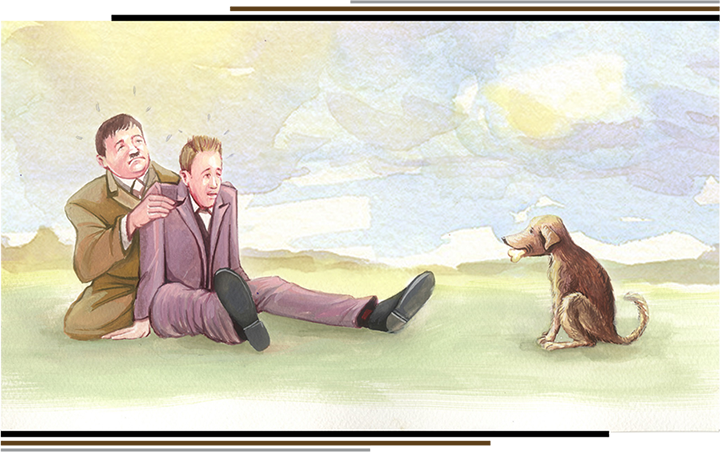
Stan then returned once again to the starting point of vaudeville. But just before that, he starred in a quickie “two-reeler” for producer “Broncho Billy” Anderson, who was a cowboy star earlier. The “two-reeler” was “Lucky Dog” directed by Jesse Robbins, an important film in cinematic history, as Oliver Norvell Hardy was one of the actors supporting Stan. Stan recounts, “Babe and I were friendly, but there was nothing about the picture or our own personal relationship to suggest that we might ever become partners. He and I were just two working comics, glad to have a job - any job.” Stan was of the thought that this would perhaps be the end of his stint in pictures.
In the meantime, Hal Roach started his production career in full swing. He found a working producer to handle studio activities in F. Richard “Dick” Jones. Stan was on the Pantages circuit in vaudeville, and Babe Hardy was becoming known as an excellent heavy in the studios. After working for Vitagraph and Jimmy Aubrey as a heavy, Hardy appeared in a series of two-reelers for Fox Studios. After this stint, Roach called Hardy to work on a two-reeler with Theda Bara. Theda Bara was Fox Studio’s biggest star, who was now on the decline. Babe signed a Roach contract, as Roach thought he could be convincing at both – a heavy and a comic.
In 1919, after a year in vaudeville, Stan returned to California. “Broncho Billy” Anderson met him and informed him that the two-reeler ‘Lucky Dog’ had received a good response from the audience. ‘Lucky Dog’ had been released in Metro. Due to its success, more such pictures were awaited by the audience. So he signed Stan on contract for a series of comedies, many of which were parodies of the then famous full-length films. Rudolph Valentino’s notable film ‘Blood and Sand’ was parodied as ‘Mud and Sand’. It featured Stan Laurel as Rhubarb Vaselino, the immortal lover. A Robin Hood parody called ‘Rob ‘Em Good’, which was later retitled as ‘When Knights were cold’ was also made.
Anderson failed to honour his contract with respect to pay; so Stan again went back to vaudeville. However, the great success of ‘Mud and Sand’ was noticed by Hal Roach. So in 1920, he signed Stan on for twelve one-reelers and twelve two-reelers, some of them parodies, and the others originals.
After his initial contract with Roach was finished, Stan starred in actor-comedian and producer Joe Rock’s production called the Stan Laurel comedies. A number of two-reelers like “Dr. Pyckle and Mr. Pryde”, which was a take-off on Dr. Jekyll and Mr. Hyde and “Monsieur Don’t Care”, a parody on “Monsieur Beaucaire”, a Rudolph Valentino film, were produced. Mae was becoming a hindrance to producer Rock, since she insisted on playing Stan’s girlfriend in his films. Rock didn’t want her for the part since she had an imposing stature. The result was that Stan and Mae’s relationship hit a rough patch. She wanted them both to go back to vaudeville and Stan had no intention of leaving Hollywood. Stan’s rocky relationship with Mae affected his composure at work. He became irritable. Mae wished to go back to Australia and producer Joe Rock arranged for her travel back. So Stan and Mae’s relationship ended in 1925. Stan attained “serenity” after being released from the cage of obligation. The success of the Stan Laurel Comedies resulted in Hal Roach approaching him to work in his movies again.
Also, in 1926, both Stan and Oliver Hardy were vital parts of his ‘Roach Comedy All Stars’, an organization of genuine artists, each a potential star in the making. At this time, the Hal Roach Studio was into production of one-reelers and two-reelers. Roach alongwith producer Dick Jones began a series of comedies with a versatile and talented comedian named Jimmy (or James) Finlayson as star. Stan’s first job as a writer and director in a Roach Studio production was in a Finlayson one-reeler, and he did it well. He also directed a few of the “fading-star” films. In one of these films, Babe Hardy was cast as a timid butler. Babe, who loved cooking, scalded himself while cooking a leg of lamb. In search of a substitute to fill the role, Dick Jones and Roach asked Stan to play the role. Stan obliged grudgingly. The picture was “Get ‘Em Young”. The legendary duo thus came together on the sets of a Hal Roach venture.
Around this time, Stan got married to American actress Lois Neilson on 23rd August, 1926. A year later, a pretty little angel, Lois was born to them on December 10, 1927. One more merry company came in the form of a son, Stanley Robert, who was born on May 7, 1930. However, being a premature and sickly baby, he died nine days after birth. Stan and Lois were devastated by this tragedy and took a while to come out of it.
“Get ‘Em Young” was followed by “Slipping Wives” – a story of an artist, his beautiful wife and a cardboard lover, with a comic butler also among the cast. Guess who were the two supporting actors who played the supporting roles of the cardboard lover and the butler? Yes, that’s right! Stan Laurel was the cardboard lover and Babe Hardy was the butler in this Hal Roach picture.
Of course, they just did not know then that they would share a lifelong association as a comic duo in films, with unparalleled fame binding them forever! The studios of Hal Roach thus served as the turning point in their lives…for their paths intersected each other’s here.

Hal Roach with his organizational ability and instinct for spotting talent, probably saw more talent in them. Their parts in his films started becoming larger and larger, while that of the other actors became smaller and smaller. Consequently, Roach gave Leo McCarey, his production supervisor and director, the job of directing the film, “Putting Pants on Philip”. This was the first official Laurel and Hardy film. Laurel and Hardy fitted the leads in this film very well.
In late 1927, Roach released the Laurel and Hardy comedies showing the exhibitors first “Let George Do It” and then “The Battle of the Century”. Both these films ran successfully at the box office and most exhibitors cashed in on it. “Putting Pants on Philip” was put on hold and released only some months after completion.
“The Battle of the Century” was one of the greatest comedies ever made – it was “the battle of all battles”, albeit with pies. During a discussion on plot lines for a Laurel and Hardy film, an idea man had suggested, “We could even slip a few pies into it and ………” and was hooted down by the others. Yet Stan pondered over this idea and put forth his viewpoint, “Look, if we make a pie picture – let’s make a pie picture to end all pie pictures. Let’s give them so many pies that there will never be room for any more pie pictures in the whole history of the movies.”
That is how ‘The Battle of the Century’ was conceived. The pies used were real pies, not studio substitutes; banana, blueberry, cherry, coconut, custard, lemon cream and raspberry – oh wow! - all from The Los Angeles Pie Company; a full day’s output of four thousand pies. The film was a pie-happy picture with people throwing pies right, left and everywhere. Now take this, you too have a pie! Boing!

The onscreen characters of Laurel and Hardy did not come out of the blue one day; they were created as a process of creative evolution over the years, in the late 20’s and early 30’s.
They portrayed their characters naturally in front of the cameras. As the scene developed, they would improvise and build on their characters. Some of the classic scenes in their pictures were developed thus. Hardy thought of himself as a prop for Stan, to help make the situation funnier.
Since 1914, Babe Hardy and Stan had worn a derby hat for enhancement of their comic effect. According to Stan, “The derby hat to me has always seemed to be part of a comic’s make-up for as far back as I can remember. I’m sure that’s why Charlie (Chaplin) wore one. Most of the comics we saw as boys wore them, so I guess you’d say that’s one item that’s strictly in the public domain.”
As regards their other attire, they sometimes did wear odd garments for humorous effect. But otherwise it was always formal stand-up collars and derbies, to give their onscreen characters a certain cute dignity. Stan had said, “There’s nothing funnier than a guy being dignified and dumb. As far as make-up goes, I emphasized my lack of brains by making my face as blank as possible. I used very light make-up and made my eyes smaller by lining the inner lids. Babe, in keeping with his wish to obtain an even bigger kind of dignity, combed his hair down in a split-curl bangs effect.”
Stan had shaved his head down to a crew cut for a 1927 picture. After his hair grew, it refused to stay brushed. The upraised hair evoked laughter from his friends, and comedy being Stan’s soul, he scratched his head and pulled up his hair, at the same time bolstering his look. His lean features with raised hair and triangular chin were good fodder for brilliant caricaturists. So easy and so funny J
As for Hardy, he had always worn a derby in his early days in Florida. But the Ollie Hardy character was partly based on “Helpful Henry”, a cartoon character he read in Georgian newspapers, when he was a boy. Basically a nice person, the Henry character was very big, fussy and important and always tried to help; but ended up making a mess of things – very much like the character that Hardy played.
Hardy was brought up with Southern manners, so he was always courteous and gallant while addressing women and introducing men even in the movies, though it was exaggerated for comic effect. Their artistic essence lay in the fact that they were ignorant of the ways of the world; their characteristic innocence was their hallmark; it endeared them to audiences in a way much beyond their dreams. The public began to take note of these two wonderful stars.

Hardy had three permanent trademarks in his films. His sample case of tricks included the tie-twiddle, the camera look and the cry. ‘Why Girls Love Sailors’, is a significant film for it gave Babe Hardy his famous and humorous “tie-twiddle” trademark; his standard form of reacting when faced with a dreadful situation which of course, he was not guilty of! The Hardy slow burn or “camera look”, showing exasperation and disgust was also born in the same movie.
Babe later said of it, “The camera was grinding away, and I knew I had to do something, so I thought of blowing my nose with my wet and sopping tie. I was raising my tie to my nose when all of a sudden I realized that this would be a bit vulgar. There were some ladies watching us. So I waved the tie in a kind of tiddly-widdly fashion, in a kind of comic way, to show that I was embarrassed. I improved on that little bit of business later on, and I used it for any number of situations. But usually I did it when I had to show extreme embarrassment while trying to look friendly at the same time. And that’s how the tie-twiddle was born.”
Both these humorous trademarks were subject to infinite variations gradually; they helped the audience to savour comedy.
The film ‘Double Whoopee’ contained two Laurel and Hardy trademarks. One trademark was Ollie’s aggressiveness in entering or leaving a room before Stan. Stan, though accepting of his dear friend’s trend, never tired of trying to enter or leave first. Well, what’s the harm in trying? A case of the thin one thinking he can squeeze in somehow, anyhow, anywhere! The second one was Ollie’s fantastic relish in using any writing instrument and signing his name with a flourish.
Stan sported his spiky hair in all his films. His “whiny-look” face and trademark “hanger-in-my-mouth” wide smile are also famous. He would look completely blank into the camera with an innocent gesture, flailing his arms with innocence, always looking upto his comrade Hardy. When all else failed, he would take to bouts of crying in cases of great predicaments. Boo…hoo…hoo…!!!! Waaahhh!!!!

The triumvirate of Stan, Babe and Hal Roach were always on excellent terms with each other. As an employer, director Roach allowed them the creative freedom so necessary for a genuine artist, to unleash their latent ability before the camera. They could do whatever they wished to before the camera; Roach did not curb their freedom.
Hardy always admired Stan’s creative ability and had complete confidence in him. Hence he did not go into the creative aspects of the pictures, neither the analysis nor the editing of it. It was his feeling that Stan would check out and set it right eventually. Besides, the many falls and dumps in mud holes was enough hard work for him!
Stan and Babe were very genteel and beautiful souls and this helped their working bond. Both Hardy and Roach were big men with a zesty respect for life, loved golf and lived life fully. Stan Laurel was a compulsive gag man and a great plotter of plots.
Stan and Babe kept their own names in pictures, because their character names couldn’t be stolen from them. They didn’t mind being identified as nitwits, for underneath they were very nice people. They were always well groomed, even off the camera. Babe, despite being fat, was of solid athletic build – a result of his love for golf and also perhaps his umpteen falls into pools of water, mud, molasses and oil, from which he had to wade through!

From the chrysalis of the “All Star Series”, Laurel and Hardy emerged as stalwarts with unique personalities with the “Laurel and Hardy Series”.
Stan and the director would weave the plot or a semblance of it for Laurel and Hardy. Though Babe sometimes did suggest ideas, the scripting would be left to Stan and the others.
In the late 20’s, domestic comedies ruled the forte. In these comedies, the theme of two very stupid husbands trying to outwit their two crafty and shrewish wives was implemented. ‘Their Purple Moment’ (1928) was one such feature. In the early stages of the Laurel and Hardy comedies, especially when their characters needed to develop more, the climax would many a times have a mandatory chase sequence, which was one huge merry-go-round!
During 1928, Stan took active interest in suggestion and working out of gags. He received no extra remuneration for this, but then he did it out of love for his work. His suggestions were valued by the director. Stan was also aware that there had to be a time gap; in other words, some space between the comic gags. This he felt was a necessity so that the audience could enjoy the humour in full measure. This technique called for some restraint and was used well in ‘Leave ‘Em Laughing’, a silent film.
Any object or animal can be grist for comedy in a comedian’s mill. Other than the famous banana peel fall about, sticky chewing gum, hard to open boxes, chattering monkeys, bleeting goats, anything and everything can be turned into comedy. Comedy combined with beauty in films make for a dazzling setup. Hal Roach knew this and pretty girls like Paulette Goddard, Lupe Velez and Jean Harlow acted in his films. Also, Laurel and Hardy were very fortunate to have the rock steady support of actor Jimmy Finlayson, who served as their stooge. He played the villain in their films signifying the harsh world around their two simple and innocent comic characters.

The year 1929 was a year of disruptions for filmmakers as well as the actors. This was because films were going through a transitional period – sound came into the movies. Movies started speaking! The hitherto silent films suddenly came alive with the change wrought by sound. It was here to stay forever. Films; drama, action or comedy; could now, never be in silence. The silent films went for a silent death to give birth to the newness of sound.
During this period of depression, Laurel and Hardy frequently featured in MGM advertisements. Later, MGM announced its debut in sound with an “all-star” film, “The Hollywood Revue of 1929”. The film had all the noted stars of MGM with Laurel and Hardy furnishing the comic aspects.
Laurel and Hardy welcomed the advent of sound. As comedians, they had never used their voices earlier before audiences. Now their voices sounded distinct and pleasant on the sound track; the Georgia-bred American Oliver Hardy with his Southern tenor and Englishman Stan with his soft Lancashire speech struck a chord with the audiences. “Babe” Hardy had his own distinctive and cute way of pronouncing some words; it was always boid for bird, woid for word. The North Country (England) Stan Laurel would place the first syllable emphasis of words like as in con-trol, con-dition. Their last silent two-reelers and their early sound two-reelers show that their transition to sound was very smooth.
With ‘sound involvement’ in movies, many actors felt it was pivotal that stories be told in words. But it was not so with Laurel and Hardy. They knew that in theater, sound took precedence over the visual effects on stage, but they knew that it was not the same on the silver screen of cinema. They understood that cinema was such that it was always the visuals which grabbed attention first; they naturally had priority over the audio effects. They decided to utilize sound just as an added novelty in their cinema. Their first talkie ‘Unaccustomed As We Are’ (1929) was directed by Lewis Foster.

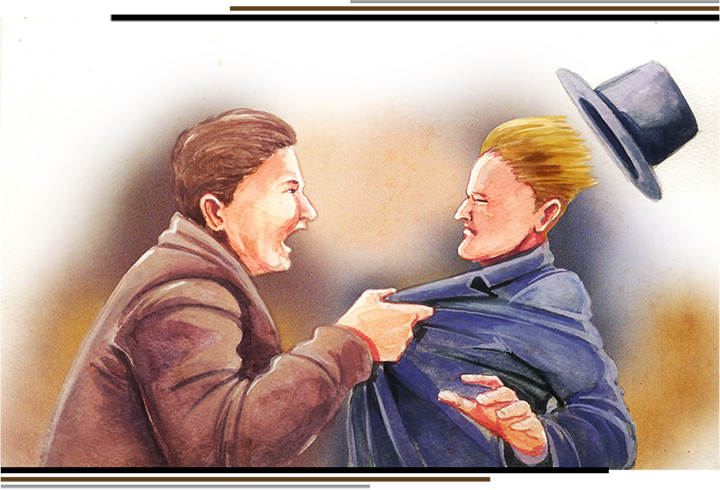
The duo has enacted a variety of roles in everyday life; from poor tramps to rich businessmen, from sailors on ships to soldiers fighting in wars, to convicts in jail and detectives on the prowl. Whatever the role they played, the common man found something in common with them; they were so much like him!
Men O’ War (1929) was one of their sunniest comedies; the sun shone right through the film in which they played sailors - two simple, pure and cheerful gobs, who were out for a holiday. Another movie ‘The Perfect Day’ (1929) showed the boys in a picnic. It recorded the funniest sound effect, when Hardy hit Laurel over the head with an automobile jack. The ringing sound from the blow made it seem as though a heavy hammer had struck an anvil.
The Stan-Ollie onscreen friendship survived beyond their indignities. The heartfelt warmth between them could never be broken up; even if it did break up, it would be for only a minute; no more. Their artistry in getting good, solid laughs for their film sequences was admirable and was supported by good film editing by Stan. He also decided the tempo of their comedy films. By the beginning of 1930, Laurel and Hardy had become very famous as comedians. ‘Brats’ filmed in 1930, was produced with the idea that two Laurel and Hardy in a film would be even funnier. Thus Laurel and Hardy played their own sons in this film, carrying off their role as children incredibly well.

During this time, cinemascope became available for films. Filmmakers had the option of entering the field of the feature film. Stan however did feel that two- and three-reelers were more favourable for their comedies, rather than the full length feature film. The Laurel and Hardy feature films were financially successful…but it was realized that the features were too lengthy for their comic gags.
Some of the most remarkable and rewarding films of Laurel and Hardy were made in the years 1931-33. They were short subject films and included ‘Our Wife’ and ‘Helpmates’. ‘Pardon Us’, the first Laurel and Hardy full-length feature film was released in 1931. This was also the year when competition from cartoon films grew. Another film was ‘The Rogue Song’ by MGM in which Laurel and Hardy, added faint comic relief. In this new situation, they felt out of place since they had to forego their freedom to do comedy as they pleased.
Ollie and Stan grew from playing simple airheads doing nonsensical things in their earliest films to playing delightful and completely stupid characters in their later films.

In the twenties and thirties, film comedians had to rely on their own abilities to create stories and act them out in front of the camera. Most of the early Laurel and Hardy films did not have any modus operandi. A germ of an idea was all that was required; all good ideas were welcomed, discussed, developed and scripting would be done alongside production. Thus the fundamental idea would be the thread around which infinite variations would be spun. Everybody helped everybody – the cast helped the crew and vice-versa. With no pressures of schedule to meet deadlines, the cast and crew had fun while shooting. The unbreakable team of Laurel and Hardy were firmly entrenched in the Roach studios.
The film ‘The Music Box’ was one of their finest short films and won them their only Academy Award. It was their improvisations on the sets which resulted in remarkable films. ‘The Music Box’ came from their ‘out of the box’ thinking – their inventiveness, after a period of time in which their creativity had ebbed. The Motion Picture Academy of Arts and Sciences cited this film as the best short subject of 1932. Stan Laurel regards it as the best picture, a true masterpiece ever made by them.
The Laurel and Hardy personalities were now made – their dumbness in their first films made way to polite gentlemen, who were perpetually ignorant and troubled, but nevertheless had an invincible spirit. These gentlemen never harmed anyone. Yet they were always at the wrong end of the stick. The magic was that they always geared up for their next adventure, come what may – rain, pain or disdain!

After their second feature film ‘Pack Up Your Troubles’ was completed in 1932, Stan and Babe decided to take an extended break. Earlier they had gone on brief vacations; not much beyond Hollywood. To both of them, the Roach Studios was like a second home; a home away from home.
Change or a vacation break is a prerequisite otherwise stagnation sets in. Stan and Babe were churning out movies after movies continuously for the past seven years. Stan decided to take a vacation to England with his family, to catch up with his relatives there. Babe actually wanted to go to Canada. But when Stan told him about the superfine golf clubs in Scotland, he decided to accompany Stan.
Everywhere that they went, they were mobbed by fans. This was when they realized the extent of their fame! Crowds gathered in huge numbers and policemen had to be deployed to control the crowds. They were stars now – who had captivated their audiences with the magical light of comedy and brightened their lives…they were cheered and clapped for and at times, crowds even sang the theme song ‘The Cuckoo Song’ from their films.
Laurel and Hardy toured many places like Southampton, London, Leicester Square, Birmingham, Manchester, Newcastle, Glasgow, France, and even California. They had a tumultuous reception everywhere and were feted and cheered by fans. The response of the crowd unnerved them. They had come to play golf and catch fish – they felt like they were the fish that the public wanted to catch, hook, line and sinker! They were like public property - the attention showered upon them made them realize for the first time, that they were extremely popular – they were ordinary no more; they were extraordinary! It was the wonder of wonders for them!
Although their careers were soaring up, their personal lives were going downhill. Stan and Lois Neilson were having compatibility issues in their marriage. Since they could not settle their differences, they instead settled for a divorce in 1933. Stan then had a whirlwind marriage to Virginia Ruth Rogers in 1934. She and Lois Jr., Stan’s daughter, got along well, and for a while everything was fine.
The duo gained rapid advancement both in silent and sound films, in English and non-English speaking countries. Comedy in silence was easier to understand for it broke down the barriers that umpteen languages around the world created. The audience laughed easily for they understood easily.
The Laurel and Hardy feature ‘Our Relations’ (1936) was produced by Laurel himself; Roach was the executive producer. The script was taken from W.W. Jacob’s famous story, “The Money Box”. Hal Roach then brought out ‘The Bohemian Girl taken from another old opera, Balfe’s ‘The Bohemian Girl’. Jimmy Home and Charley Rogers directed this film which was a series of pantomime routines revolving around the plot of a princess who is stolen by gypsies.
By 1937, Stan’s marriage to Virginia also collapsed. Even Hardy’s marriage had hit rough weather. Myrtle was a chronic alcoholic and it affected their marriage very much. The strain showed and Oliver was emotionally drained. While testifying in court, he cried his heart out. The man who made the whole world laugh and be happy was himself in tears! Whatever and however their home situations, they never let it interfere with their screen output.

‘Swiss Miss’ (1938), ‘Blockheads’ (1938), ‘A Chump at Oxford’ (1940) and ‘Saps at Sea’ (1940) were other worthwhile feature films of the duo. It was during the making of `Swiss Miss’ that Stan remarried. This time it was to a Russian singer named Vera Ivanova Shuvalova, known as Illiana in short. The marriage was however doomed from the very beginning. Illiana was quarrelsome by nature and was erratic in her behaviour. It reached its logical end in 1940.
Oliver Norvell Hardy and Stan Laurel were working on the sets of ‘The Flying Deuces’ (1939) when Virginia Lucille Jones fell for the “Babe-like” innocence of Hardy’s soul. Lucille worked as the script supervisor in this film. They duo got married on 7th March, 1940. Hardy and Lucille had a three-acre farm in the San Fernando Valley. Hardy also loved horses and had a stable of his own with trainer and contract jockey since he loved the excitement of the track. He loved gardening too. He and Lucille also planted a half acre in vegetables in their farm. They even bought around hundred chickens, turkeys and ducks. The Hardys had overabundance in everything – fruits, vegetables, eggs and chickens.
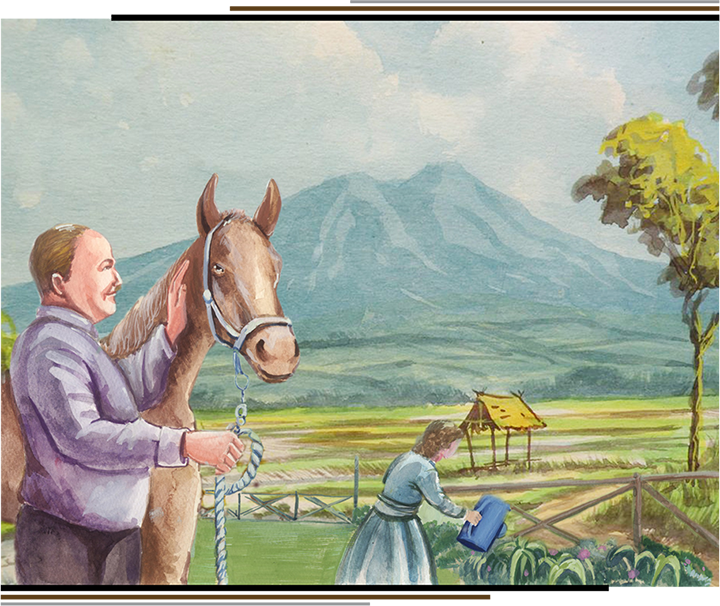
The farmer Babe then became an expert carpenter. In his well-equipped workshop, he built interior as well as exterior furniture. Being a gourmet, Hardy enjoyed good food and its preparation. Like a true chef, he had his special grind and combination and his own special blend of seasonings. His specialties were spaghetti and meat balls; hamburgers; waffles and his scrumptious Caesar salad.

Stan used to get confused when asked by comic artistes how to learn the task of being a comedian. Another time, he was asked by a friend to define comedy. Stan was floored by the question. Stan has given his explanation thus, “Can anybody define comedy? ...You have to learn what people will laugh at, then proceed accordingly. First of all, you should start out, I think, with a fairly believable plot, no matter how broad it is, and then work on from there. Nobody’s going to teach you. That’s why one of the best ways for a young comedian to learn his trade is to get as much summer stock as possible, appearing in repertory, changing parts, being in different situations, over and over again until he learns the `feel’ of different audiences. He has to learn why certain gags go over, and why they don’t. You develop an intuition after facing various types of audiences. What one will laugh at, another won’t, and vice versa. One day you’ll know. Then, you’re in business.”
Hardy was always perfect with his lines and gestures in front of the camera. He had the habit of rehearsing his lines for the next day as soon as he got home. He learned his lines quickly and would go through them again just before going to sleep. He would study the scene closely to get the feel. He did not watch his own films very often.
Personally and professionally, even in the movies they acted in, they were both very good men; simple and charming without any evil in them. Their acting was controlled; they knew their art well enough to know that every single and small movement of the body translates boldly on screen.
According to his wife Lucille, “He was naturally gracious and courtly in manner …. He was by nature timid, sentimental and extremely sensitive. To hide this, he sometimes affected a blustering, aggressive, almost gruff exterior to hide the inner inadequacy he sometimes felt.”

As all good things must come to pass, the opportunities for Laurel and Hardy in comedy films also became scarce. The decline in their fortunes started in 1940. Short films had by then become outdated. At the same time, the gossip mills abounded with rumours that there was a rift between them. However the rumours were just that – rumours. They had individual contracts with Hal Roach. Stan’s tenure ended in 1939. After Stan’s contract had ended, Babe did a film, ‘Zenobia’ with actor-comedian Harry Langdon, who was like a substitute for Stan. But it was disastrous. Laurel and Hardy were like two sides of the same coin, which have to coexist to be a whole. Babe’s contract with Roach terminated in 1940. Now they both were free of their Roach contracts and could venture into new avenues.
Together they then formed the Laurel and Hardy Feature Productions. They even contemplated performing before live audiences by reviving American composer Victor Herbert’s ‘The Red Mill’. They also took part in a thirty-minute sketch in ‘The Laurel and Hardy Revue’, a full-length show with sixty-five people on tour.
‘The Laurel & Hardy Revue’ gained favourable response. This sidelined ‘The Red Mill’ plans. The Revue kept them on tour through the Midwest and East, the Caribbean, Chicago & Detroit. Babe then had a laryngitis problem. This made them cancel their further tour to the city of Boston.
Later, they entered into agreements with two film companies MGM and 20th Century-Fox in 1941. Both the studios attempted to put forward Laurel & Hardy in a completely new way. They were devoid of their familiar trademarks and the charm of their “babyish” unintelligence. Only a slight resemblance of their earlier true characters in the lovable Laurel & Hardy films remained.
This was the start of their descent in films. Creativity if curbed does more harm than good. Creative talent needs a free hand to forge out its own path and meander its way to its full potential. Stan said bitterly of those days, “What was there for us to do but get out? We had no say in those films, and it sure looked it. We had done too many films in our own way for us to keep taking anything like that, so we gave up the ghost. It was sickening.”
They took a break, rested and waited. Now that was better than doing what they didn’t want to do.
In the meantime, Stan’s personal life was also in the doldrums. He remarried his earlier wife, Virginia Ruth Rogers in 1941. Their relationship however was fraught with frequent quarrels and was not a happy one. What further added to the woe was that Stan fell in love with a widowed blonde named Ida Kitaeva Raphael. Ida was a Russian opera singer. Stan proposed to her grandly with a big box of twenty-four roses. Perhaps he wished to signify that he wanted to spend all the twenty-four hours in each day of the rest of his life, with her as his companion.
Stan’s marriage to Virginia ended in divorce in April 1946. He married Ida Kitaeva in a simple ceremony in Yuma, Arizona on 6th May, 1946. Together they went to San Diego in California for their honeymoon. Ida happily told the reporters assembled there, “…no more divorces for Stan Laurel!” So sure was Ida about their togetherness! Stan’s personal life improved and they remained happily married.
On the career front, an old friend, theatre manager Bernard Delfont invited Laurel & Hardy for a tour of the music halls of the British Isles. Do you remember that their first visit to Britain together had left their hopes high and dry on the public linen of clamour? Now this time, Babe’s hopes of golfing and Stan’s hopes of seeing his cousins were renewed.
This required shot in the arm brought zest into their life, and they set sail for England in 1947. With the fall in the fortunes of their films, Laurel & Hardy expected that the crowds would not bother them this time. Yet their fame was such that the crowds just poured in heavily. However this time, they did meet their agenda – Babe did play golf and Stan did meet his cousins. Most importantly, Stan met his father, A. J. – that was the feather in his cap - and had hearty talks with him. A.J. was at that time staying at Stan’s sister’s house in Grantham, Lincolnshire. A.J. beamed with pride at Stan – his son was the toast of England and the world!

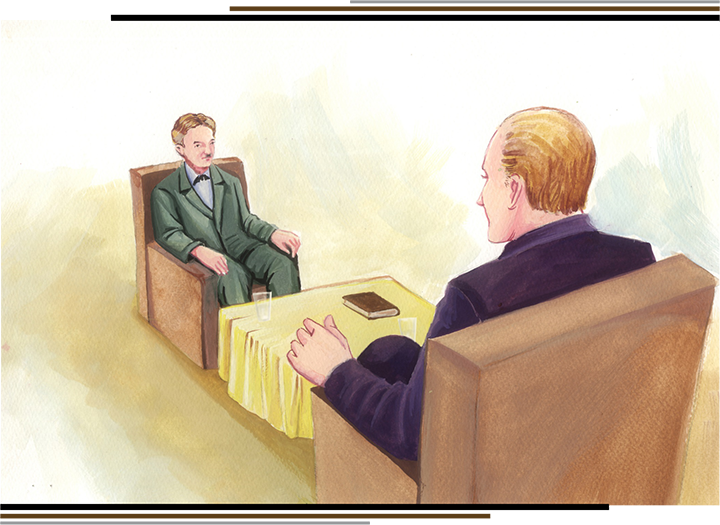
In 1947, when Stan was on tour, a Fleet Street journalist, Hannen Swaffer, became his friend. Swaffer wished to give Charlie Chaplin a copy of his latest book, and asked Stan to give it to him. Stan obliged him. He thought back of the time when he and Charlie Chaplin had left England for America on a ship, with only a little pocket money. Both were music hall comedians and had now done rather well for themselves. They had gained a lot of eminence in film comedy and people laughed uproariously at their gags. Films kept them busy, hence their social interaction was very limited. Whenever their paths intersected, only a brief hello or acknowledgement could be made.
When Stan returned to America, he fixed an appointment with Chaplin at his Beverly Hills home. What was intended to be a chat went on to be a big talkathon of seven hours. After all, this was a meeting of old friends – they had much to talk about – the old days, the whereabouts of the other troupe members and so on. Stan later said of this meeting with Chaplin, “He really came out of his shell and was the old Charlie I knew…that was a wonderful day.”
One of Stan Laurel’s protégés was Marcel Marceau, a die-hard fan of him and Charlie Chaplin. Marceau was an ardent fan of pantomime. He wished to bring back its lost glory. Even though he had a fruit vineyard where he laboured, he also started his own company which gave pantomime shows. He once asked Stan Laurel to visit the small theater where his program was to be shown. Stan agreed and after the show even arranged for a press conference. He openly praised Marceau as an unsung genius. He also spoke highly of Marceau’s company. This gave the much needed impetus and recognition that Marceau so rightfully required. According to Marcel Marceau, “All mimes in the world today owe much to Stan Laurel. To them Stan Laurel is a maître.”

After 9 months in the UK, Babe, due to his alien status, could not do further work there. So, they began touring Sweden, Denmark, Belgium and France and did their pantomime act before huge audiences.
Laurel & Hardy’s tours abroad of the halls and variety theaters were successful – but their hearts were set in the movies. As if to fulfill their wish, a producer in France offered them a film, which was to be done in twelve weeks. Twelve weeks went on to… twelve months!!! The film was ‘Atoll K’ (1950) – the swan song of Laurel & Hardy. It was released in America as ‘Utopia’. To put it plainly in Stan’s words, “It was an abortion. Part of the cast was talking French, some were talking Italian and there were the two of us, the stars, talking English. Nobody-and that includes the director and us-knew what the hell was going on.” Stan also suffered ill health during the making of this film. He had to have an operation, and because of it, his weight dropped considerably. He even contracted diabetes. Laurel & Hardy then returned to America after the completion of this film, without an inkling of their future plans.
Stan took it easy for a while, to get back his health. He then composed a sketch called “A Spot of Trouble”. In 1952, they both toured Britain and Ireland and played this sketch to packed houses. In 1953, Stan prepared another sketch titled “Birds of a Feather” for their next tour. On September 9, on their arrival at the small port of Cobh in Southern Ireland, they were in for a magnificent surprise. They realized the sheer magnitude of their fame and the bounteous affection that people had for them. The crowds gathered in the docks whistled and screamed in happiness; the ships and the boats in the docks sounded their horns. What was even more amazing was that all the church bells in Cobh began chiming with the “The Dance of the Cuckoos” song. An emotional Stan said, “We both cried at that time, because of the love we felt coming from everyone.” It was such an unforgettable day in their lives!!
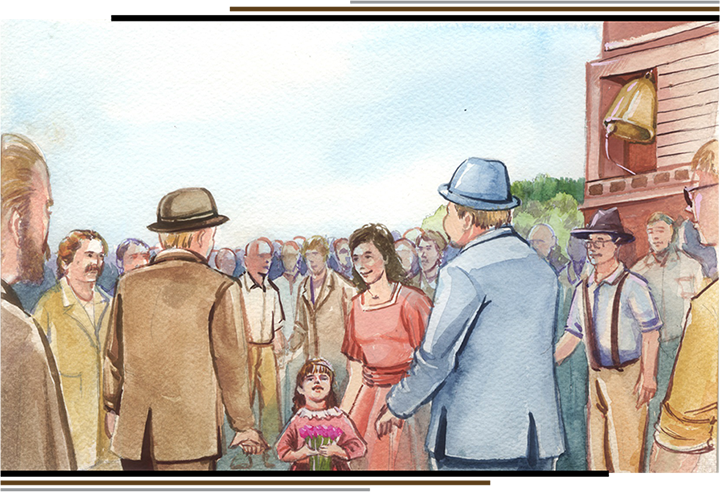
Hardy’s health was on the decline since he weighed over 350 pounds now. He even suffered a mild heart attack in the midst of the England tour. So in 1954, they returned to America after what was to be their last tour.
In the subsequent year, Hal Roach Jr. took over the reigns of his father’s studio. He realized that the Laurel & Hardy phenomenon was reaching astounding heights. This was due to the airing of Laurel and Hardy films on TV and weekly programs on local Laurel & Hardy on radio. The studios were inundated with thousands of phone calls and fan mail with curious questions related to the two sensations - Laurel & Hardy.
The duo, though not wealthy, were quite well off financially. It was okay with them that they did not garner any remuneration from the TV shows. However, they disliked the random use of their names in advertisements, right from floor wax to perfume deodorants, all without their consent. They did think of filing a suit but later banished the thought.
Hal Roach Jr. decided to utilize the ripeness of the time to re-establish their old greatness. Laurel & Hardy and Roach agreed to make four hour-long television features – the pair had to be their old self, and they had their own creative freedom.

However, just some days before shooting could commence, Stan suffered a stroke. This was in June 1955. He was paralyzed on his left side. As a result, production plans got postponed. And as if that was not enough, Hardy too fell victim to a gall bladder attack. He had already undergone treatment for a heart condition and the doctors had advised him to lose weight. From 300 pounds, he dropped down to 185 pounds within a matter of weeks. This drastic weight loss proved detrimental to his health.
From the portly Hardy, his appearance underwent a huge change which very much diluted the physical contrasts of the comic duo. In the summer of 1956, they posed for the press shutterbugs. The duo’s friends were aghast at Hardy’s altered appearance – and their reaction further saddened Babe. Hardy went into seclusion, meeting only a few close friends which included Stan, Ida and Lucille. On September 14, he fell victim to a massive stroke which left him paralyzed and speechless. To someone who had not been sick all his life, this was a big blow.
Though their popularity was on the upswing, their health did not permit them to enjoy it. Babe tried to watch TV bound to a wheelchair, but he couldn’t absorb the happenings on TV. He could neither relate to the newspaper. He was utterly frustrated. Mrs. Hardy alongwith some nurses tended to him for months, though the chances of recovery were nil. Ultimately, Oliver Norvell Hardy breathed his last on August 7, 1957, at the age of sixty-five.
In his movies, Babe was always the first one to walk in through the door before Stan. Here too, he was the first one to walk into death’s door before Stan, bidding adieu to the roller-coaster of a movie called life.
Stan was terribly shocked at Babe’s death…his partner, his chum…was gone! As he says, “He was like a brother to me. We seemed to sense each other…His life outside the studio was sports- and my life was practically all work, even after work was over. I loved editing and cutting the pictures, something he wasn’t interested in. But whatever I did was tops with him. There was never any argument between us, ever. I hope wherever he is now that he realizes how much people loved him.” Stan loved Babe very much and thought that he really was very funny. He even suffered a nervous breakdown due to Babe’s death.
Oliver Norvell Hardy was buried at the Valhalla Memorial Park Cemetery in North Hollywood, California.

In his last years, Stan had a serious illness. Even though much of his wealth went into paying alimony, he was financially well off. As he himself said, “They say I’m not a millionaire any more. They’re crazy, I’ve got Ida.” Ida knew the pain behind Stan’s wonderful smile and high-pitched giggle. They had a daughter named Lois and son-in-law Rand and two grandchildren.
In the year 1961, the Academy of Motion Picture Arts and Sciences awarded Stan Laurel an Oscar for being a pioneer in the creation of cinema comedy. A very much deserved award for a hard-working and humble gentleman. Stan’s ill health did not permit him to attend the awards night, so it was accepted on his behalf by young actor-comedian Danny Kaye, whom Stan admired. Stan was thrilled about the recognition for his work. However, he missed Babe terribly in his moment of glory.
Stan continued creating gags for fun. This was to keep his mind occupied and to cope with Babe’s death. Despite his diabetes and eye issues, his health was relatively stable. However, on 23rd February, 1965, he succumbed to a heart attack. He was seventy-four. The end came in Santa Monica, California. His perpetual sense of humour was always intact, for he had said before his death, “If any of you cry at my funeral, I’ll never speak to you again!”
Perhaps as they did below, above too, the wonderful pair are indeed making delightful comedy. The heavens have become even more divine with them there!
As Stan would always tell everyone in the end, “God bless.”

Laurel & Hardy were superb pantomimists early on in their career. As a team, they worked for 29 years (1926-55). The ingredient of love they put into their work made them shine as artists. They never underestimated their audience. Stan Laurel just wanted the audience to enjoy his movies, so he never revealed the amount of hard creative work that went behind the scenes. Their distinct funny personalities cloaked under their ‘serious’ look made them stand apart as comic geniuses. Stan though always late & always wrong, loved Ollie just too much. Of the two, Stan was stupid and Ollie was smarter than Stan. Stan’s stupidity always landed them in trouble…always in predicaments which would leave Ollie…exasperated!!!
Laurel and Hardy were a duo, magical in comedy. They delight moviegoers even today with their slapstick comedy routines. They not only had a good on-screen chemistry but the dynamics of their physiques were terrific. Theirs shall remain a genius which is lasting and they shall be celebrated by legions of fans through the ages. They are the international symbols of comedy.
Their pairing was unique. If both were fat or both were thin, perhaps it would not have been so charming. Nature had sculpted their features in such a way that they were meant to be funny men. Their face-cuts were a treat for caricatures. This was their advantage…the amused looks on the faces of people came on even before they spoke anything. Theirs was graceful comedy…not something easy, since a lot of practice would be required…but the beaming smiles and happy laughter from the audience were the priceless returns for their hard work. The inner child in us comes out when we see them on screen. The innocence of two grown up adults show that we must never lose our child-like innocence amidst the cacophony of life.
It is easy for anyone to relate to Laurel & Hardy; for they relate to the most basic situations in life going wrong. Comedy, especially the physical expressive type; has no barriers of language or customs. Thus it reaches far and wide across the globe and is easily understood and appreciated by people, irrespective of their age or stage in life. Their childlike simplicity appealed to everyone…children loved them, adults adored them. Their comedies have never had to resort to vulgarity at any point in their career. Theirs was clean comedy, meant for family viewing.
The best ideas for comedy come from life. The pictures may seem unreal but look around you – human life abounds in comic situations…you can even picture Laurel and Hardy scenes in them. As Hardy himself has explained regarding the success of their characters, “The world is full of Laurel and Hardys. I saw them all the time as a boy at my mother’s hotel. There’s always the dumb, dumb guy, who never has anything bad happen to him- and the smart, smart guy who’s dumber than the dumb guy, only he doesn’t know it.”
Let’s start looking around us for the Laurels and Hardys of the world – we will definitely stumble upon them! For starters, I am quite like Hardy, et tu Laurel?
Next Biography








